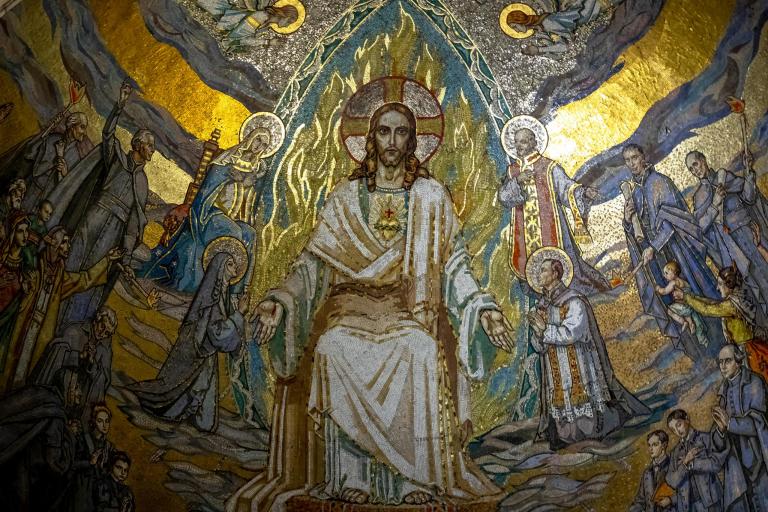
If you read through the early Christian texts known as the Gnostic Gospels, you’ll find there are two primary themes that appear again and again. The first is the idea that the kingdom of God is not found in heaven but is here on Earth right now. It’s not so much a place as it is a state-of-mind.
The second idea that appears several times in the Gnostic texts is in regard to the path to enlightenment—and how we get there. It’s the teaching that the most important spiritual insights and knowledge are already contained within us. We just have to come to recognize them. In the recent book Jesus: A New Vision, Whitley Strieber sums it up this way:
The path does not depend on worship but rather on an inner process of harmonizing one’s own life with the teachings of Jesus. By following this path, we all have the potential to enter the same state of light that he did.
The basic premise is that Jesus did not want his disciples to follow him as much as he wanted them to follow his teachings. By doing this they could be like Jesus, too. (As can you and I.) While Jesus set out a path for the disciples to follow, it was up to them to make the journey on their own, using their own intuition and good sense to guide them along the way.
This is evidenced by several similarly themed passages in the Gnostic texts, including the three below. In the first two excerpts, the disciples are looking for spiritual insights from Jesus—and as he often does in these gospels, Jesus tells the disciples that he cannot show them the way. They must find it on their own.
- Example one from the Dialogue of the Savior shows the disciples looking for guidance and Jesus directing them to stop looking outside themselves for what they seek:
The disciples asked “What is the place to which we should go.” Jesus answered, “The place which you can reach. Stand there!”
- In the second example from the Gospel of Thomas, the disciples ask a similar question of Jesus: “Show us the place where you are, since it is necessary for us to seek it.” Here, he answers the question indirectly, but again tells the disciples to look within:
There is light within a man of light and it lights up the whole world. If he does not shine, he is darkness.
- In another text, the Book of Thomas the Contender, Jesus points out the importance of searching within:
Whoever has not known himself has known nothing, but he who has known himself has at the same time already achieved knowledge about the depths of all things.
As Elaine Pagels points out in her book The Gnostic Gospels, all of these teachings point to “the self” and our capacity to find our own “inner direction” by looking to the light within us. Through this effort, Jesus tells us in the Gospel of Thomas that when you “recognize what is before your eyes, what is hidden will be revealed to you” We, in fact, hold the answers we seek and we find them by knowing ourselves at “a deep level.” Pagels continues:
The secret of gnosis is that when you know yourself at that level you will also come to know God, because you will discover that the divine is within you.
So why haven’t most of us heard about this “inner process”?
Pagels tells us that the Gnostics shared a religious perspective that was “antithetical to the claims of the institutional church.” After all, if you’re able to pursue this inner knowledge on your own, it makes the church superfluous. It enables the followers of Jesus to cut out the middleman (the church) and go directly to the source, their inner being, to discover this “divine reality.”
Pagels compares Gnosticism to psychotherapy in that they both value self-knowledge that comes through personal insights. Without these insights, “a person experiences the sense of being driven by impulses they do not understand.” We remain unaware of our own true selves. These insights come gradually and are necessary for self-knowledge. In the Gospel of Thomas, Jesus gives the following advice—and a warning:
If you bring forth what is within you, what you bring forth will save you. If you do not bring forth what is within you, what you do not bring forth will destroy you.
Is there a trick to discovering this inner knowledge?
The bad news is that much of the teachings are cryptic. As most of the Gnostic gospels were ordered destroyed by the early church, not all the books have survived intact and many are missing large chunks of text. It also seems that much of the instruction was passed on verbally, by Jesus and the followers who took up his cause after his death.
However, there are a few clues. In the Dialogue of the Savior, Jesus is quoted as telling his followers that “the mind is the guide, but reason is the teacher.” He then instructs his followers to “light the lamp within you,” telling them “every one of you who has known himself has seen the light.”
How does one see the light? According to Pagels, the disciple must bring out the understanding she or he seeks through their own spiritual discipline. This is referred to in various texts as discovering “the good within” and knowing “the One who exists within.” The best way to do this is through “a meditative silence” or whatever process you might use to calm and center yourself.
The early Christian book Zostrianos explains how one spiritual master attained enlightenment. It starts by removing yourself from all physical desires and reducing “chaos in the mind” through meditation. At that point, the disciple is able to see “a vision of the divine presence.”
The Gnostic text The Gospel of Mary Magdalene offers us this detail: the soul must first “conquer ignorance” which “assumes seven forms.” To quote Mary (with my additions in parentheses): “The first is darkness, the second desire, then ignorance, fear of death, power of the flesh (human nature), foolish reason, and self-righteous pedantry (concern with petty details).” Mary removes these negative traits from her life and declares:
What bound me is dead, what enveloped me has been vanquished; my desires are over and ignorance is no more…from now on I will rest in the eternal now.
We should also look to the teachings of Jesus. Whitley Strieber tells us the path is made easier when we read the original teachings of Jesus through texts like the Gospel of Thomas. They show “a path to goodness” achieved by “finding peace and power in oneself.” In the traditional Bible, he believes these teachings are best exemplified by the Beatitudes.
Below I include a modern-day interpretation of the Beatitudes via the website Progressive Christianity, which adds a little more context around this well-known teaching of Jesus. This is from a column titled “Beatitudes for the 21st Century” by the Reverend Becky Withington:
Blessed are the marginalized, for they are extravagantly welcome in the culture of God.
Blessed are those who care for the earth, for they promote a healthy, dynamic ecosystem that cares for us all.
Blessed are the bold, for they see the culture of God manifest before their eyes.
Blessed are the empathetic, for they heal the brokenness of the world.
Blessed are the inclusive, for they see through the eyes of love.
Blessed are those with integrity, for their hearts, minds, words and actions are one.
Blessed are those who commit themselves to peace, for they disarm violence.
Blessed are those who organize, struggle and sacrifice for freedom and equality, for they bend the moral arc of the universe towards justice.
Blessed are we in the amazing diversity of our ethnicity, age, ability, and orientation, for we make visible the glory of Creation.
From a place of quiet solitude and stillness, we discover that God lives deep within us. When we come to this realization, our perception of the world changes. We emerge as more complete, more compassionate human beings, ready to do our part to help and care for the people and community around us.













